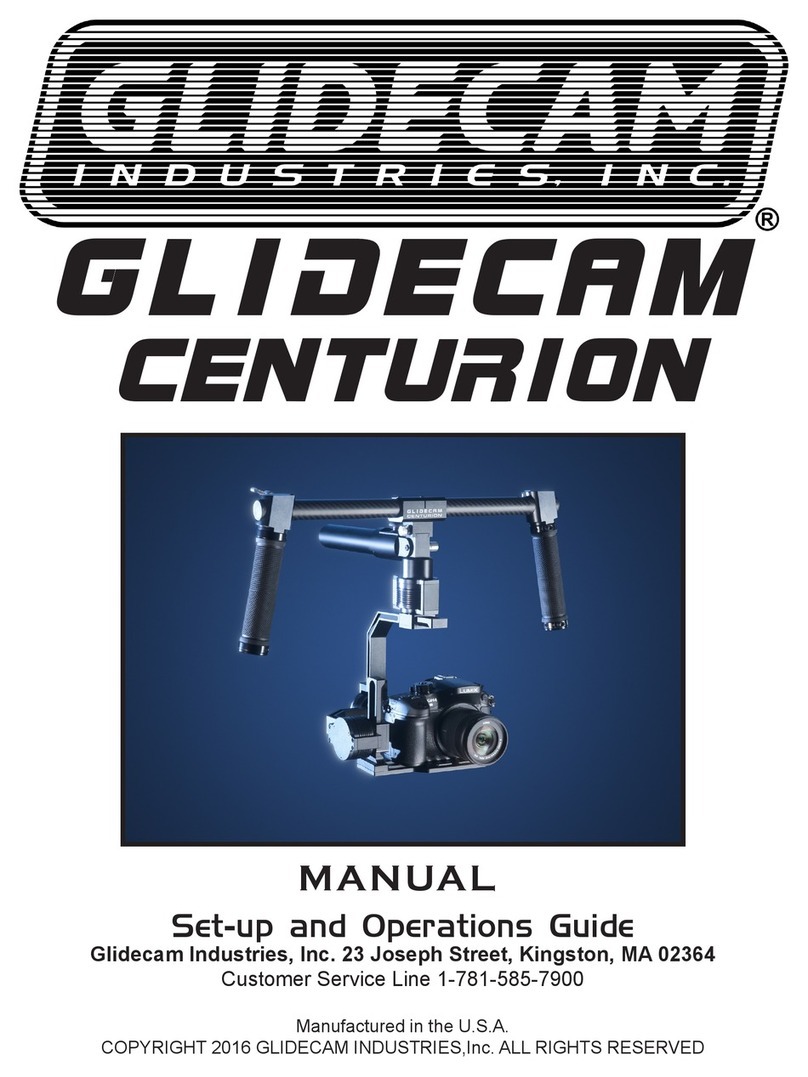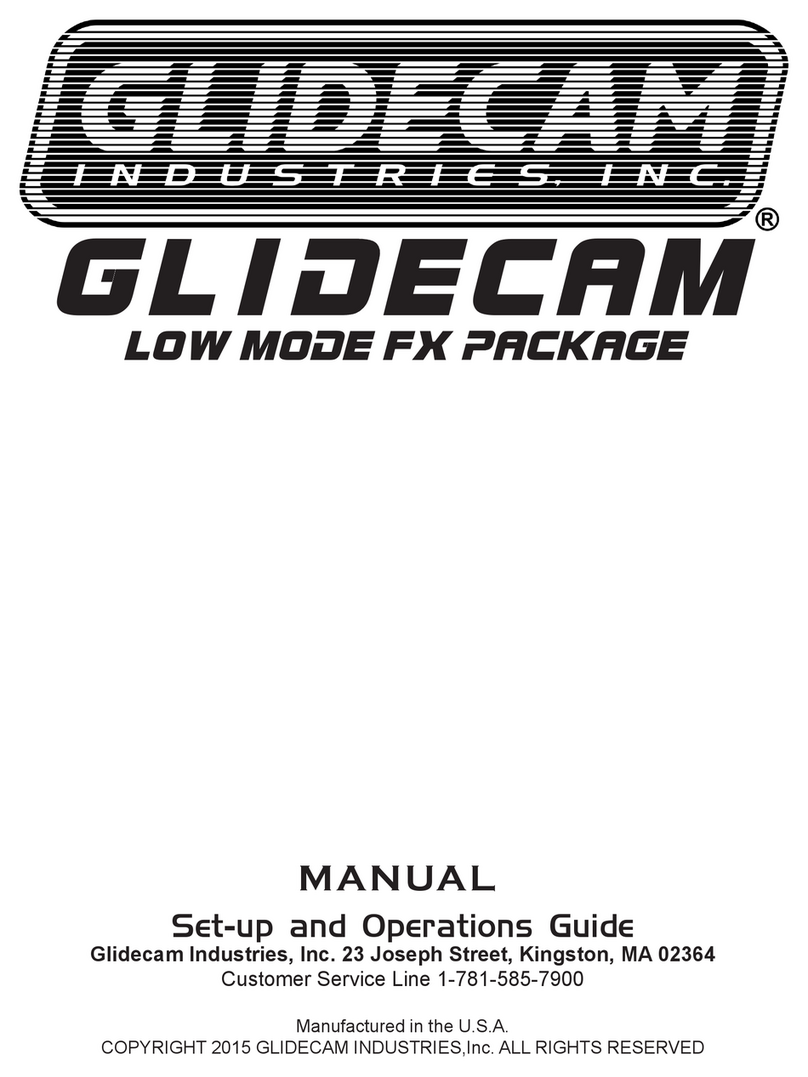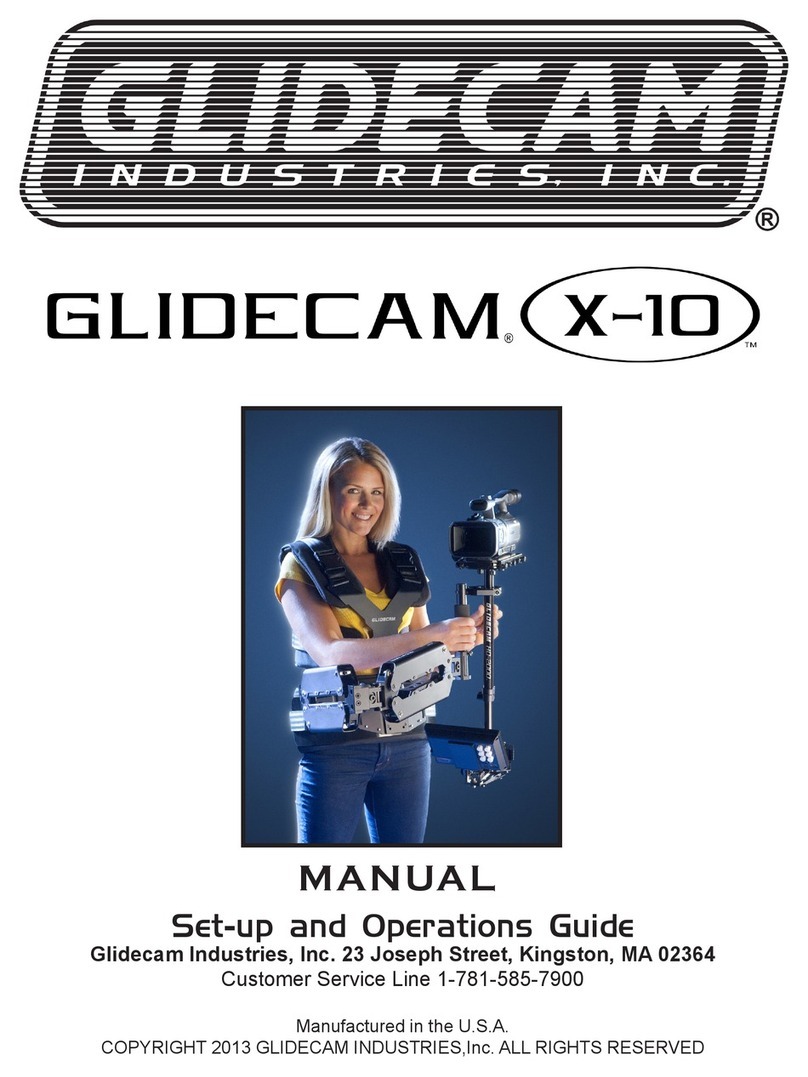
5
CHAPTER ONE
INTRODUCTION
Congratulations on your purchase of a GLIDECAM SMOOTH SHOOTER.
In order to use the GLIDECAM SMOOTH SHOOTER system, it is best to have a
basic understanding of how the system works in advance. So please make sure
you read this section before trying to setup and operate the GLIDECAM
SMOOTH SHOOTER.
The GLIDECAM SMOOTH SHOOTER Camera Stabilization System is designed
to allow you to walk, run, go up and down stairs, shoot from moving vehicles
and travel over uneven terrain without any camera instability or shake, when
used with the GLIDECAM 2000 PRO or GLIDECAM 4000 PRO (not included).
The GLIDECAM 2000 PRO and GLIDECAM 4000 PRO are generally used as
hand-held camera stabilizers; however, they can also be used with the
GLIDECAM SMOOTH SHOOTER, and when they are, they are referred to as a
SLED. The SLED carries your camera and is attached to the end of the
SPRING-LOADED SUPPORT ARM, which, in turn, is attached to the
GLIDECAM SUPPORT VEST.
hen using the GLIDECAM 2000 PRO or GLIDECAM 4000 PRO in hand-held
mode, your arm is carrying the weight of the SLED. However, when the 2000
PRO or 4000 PRO are used with the SMOOTH SHOOTER, it is the SMOOTH
SHOOTER’S SPRING-LOADED SUPPORT ARM that carries the weight of the
SLED. Because of this, you will now be able to shoot for extended periods of
time, whereas before, the stress associated with handholding the SLED reduced
your shooting time.
hile the GLIDECAM SMOOTH SHOOTER is in essence a very simple device,
its simplicity doesn’t lend ease in answering that often asked question, “how
does it work?” To answer this question completely would require delving into
Newtonian Physics and Classical Mechanics. e would have to explain - center
of gravity displacement, inertia, reduced friction and angular motion reduction
etc. However, a quick answer reveals the GLIDECAM SMOOTH SHOOTER
works by “isolating” your body’s motion from your camera, while your camera
is balanced in an isolated and relatively motionless state.
The GLIDECAM SMOOTH SHOOTER requires practice and understanding to
achieve professional looking results. e highly recommend that the user read
this manual thoroughly before setting up and operating the GLIDECAM
SMOOTH SHOOTER. Doing so will save you time, and will minimize the risk
of damage to your camera or the GLIDECAM SMOOTH SHOOTER. It is
important to perform and follow the Setup and Operation’s procedures in the
proper sequence, so as to avoid both frustration and a possible accident.
If you need technical assistance, you can page our Technical Support Line at 1-
508-830-1414 , between the hours of 10:00 AM and 5:00 PM, Eastern Standard
Time, Monday through Friday. e’re sure that once you have your GLIDECAM
SMOOTH SHOOTER up and running, you will find years of enjoyment with it.
































